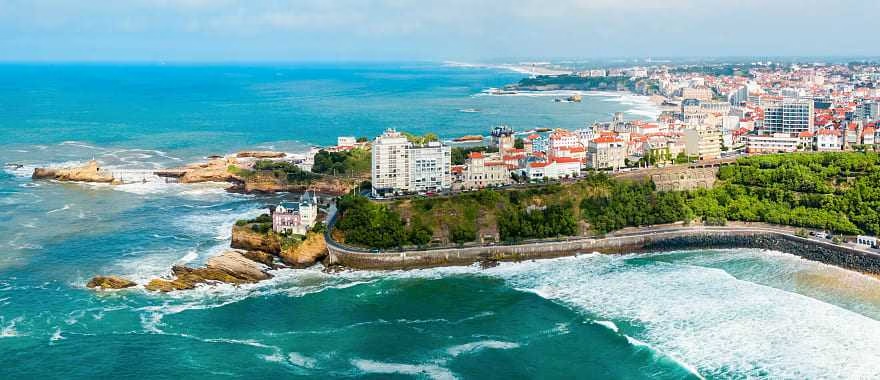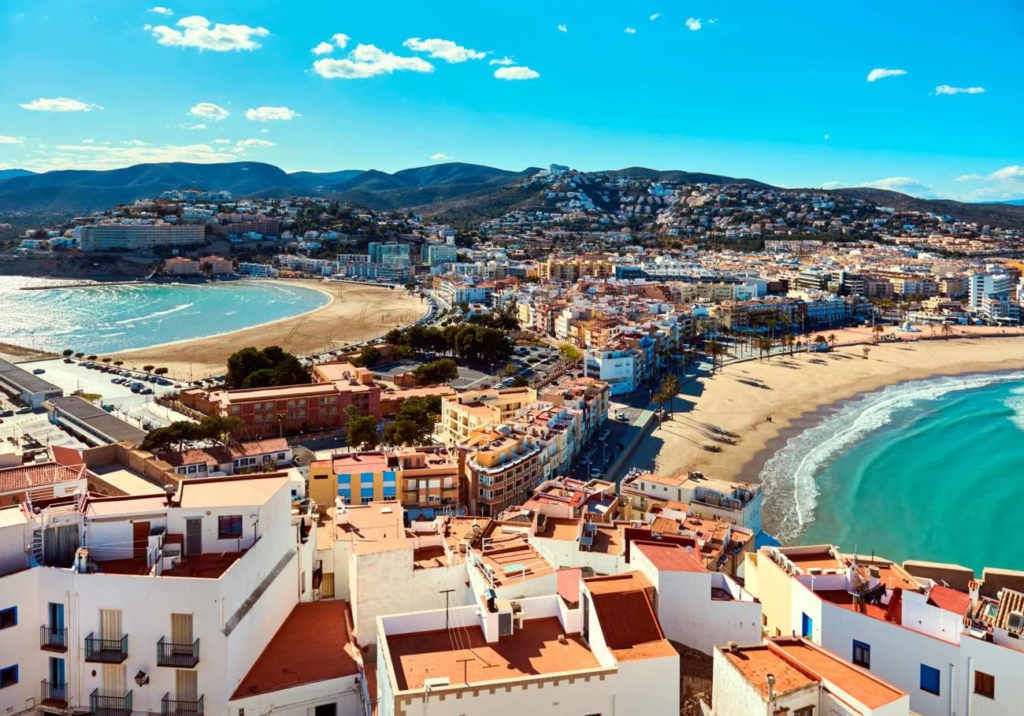The Atlantic Ocean is home to diverse island destinations that blend natural beauty, cultural heritage, and unique adventures. From volcanic archipelagos like the Azores to sun-kissed paradises like the Canary Islands, each location offers its own allure. In this comprehensive tourist guide, you will discover everything you need to know about these gems of the Atlantic. We will delve into their top attractions, best travel seasons, must-see landmarks, and insider tips for an unforgettable experience.

Introduction to the Atlantic Islands
A Brief Overview
The Atlantic Islands encompass several archipelagos spread across vast ocean waters. These islands vary in climate, culture, and ecosystems. You can find tropical beaches, volcanic craters, lush forests, and dramatic coastlines. Each destination presents a distinct flavor of history and landscape. Popular archipelagos include the Canary Islands, the Azores, Cape Verde, Bermuda, and others. Some are well-developed tourism hubs, while others remain more remote and unspoiled.
Why Visit the Atlantic Islands?
Visiting the Atlantic Islands offers many rewards. These locations often feature mild climates, abundant wildlife, and breathtaking scenery. Adventurous travelers can hike through volcanic terrains or explore underwater reefs filled with marine life. Those seeking relaxation can lounge on scenic beaches or unwind in welcoming coastal towns. Many islands also celebrate robust cultural traditions, evident in local cuisine, festivals, and architecture. As a result, travelers can immerse themselves in unique regional customs while enjoying world-class outdoor activities.
Canary Islands: Spain’s Sunshine Archipelago
Overview and Location
The Canary Islands are a Spanish archipelago located off the northwest coast of Africa. They experience a subtropical climate with warm temperatures throughout the year. The islands vary in landscape, from the desert-like dunes of Fuerteventura to the lush forests of La Gomera. Their diverse topography makes them a popular choice for nature enthusiasts, beach lovers, and sports aficionados.
Must-Visit Islands and Key Attractions
Tenerife: Known for Mount Teide, Spain’s highest peak, and the lunar-like landscapes that surround it. Tenerife also boasts vibrant nightlife in Playa de las Américas and family-friendly resorts in Costa Adeje.
Gran Canaria: Celebrated for Maspalomas Dunes, a protected nature reserve of rolling sand dunes. Las Palmas, the capital, offers a mix of rich history and modern amenities.
Lanzarote: Famous for its volcanic terrain, the Timanfaya National Park, and César Manrique’s art installations that fuse nature with architecture.
Fuerteventura: Revered for its pristine beaches, strong winds for watersports, and tranquil environment for those seeking a slower pace.
Best Time to Visit the Canary Islands
The Canary Islands enjoy a pleasant climate year-round. Temperatures typically range from 18°C to 28°C (64°F to 82°F). Peak season extends from December to April, attracting visitors fleeing colder European winters. If you prefer fewer crowds, consider visiting during the off-peak months of May or September when the weather remains warm and the islands are less busy.
The Azores: Portugal’s Volcanic Wonderland
Overview and Location
The Azores are a Portuguese archipelago in the North Atlantic, located about 1,500 kilometers (930 miles) west of mainland Portugal. They consist of nine major islands famed for their geothermal activity, lush landscapes, and whale-watching opportunities. Volcanic origins have shaped the scenery into a combination of crater lakes, hot springs, and dramatic coastal cliffs.
Highlights of the Azores
São Miguel (The Green Island): Home to Sete Cidades, a magnificent volcanic crater hosting twin lakes. Furnas, known for its geothermal activity, features hot springs and mineral-rich mud baths.
Pico Island: Dominated by Pico Volcano, Portugal’s highest mountain, which offers challenging hikes and panoramic views. The island also has UNESCO-listed vineyards grown on volcanic soil.
Faial Island: Known as the “Blue Island,” Faial is popular among sailors crossing the Atlantic. Horta Marina, adorned with colorful paintings created by visiting yachts, is a must-see.
Terceira Island: Home to the UNESCO World Heritage town of Angra do Heroísmo, filled with historic buildings and lively cultural events.
Best Time to Visit the Azores
Spring (April to June) and early autumn (September to October) are ideal for visiting. Temperatures range from 17°C to 25°C (63°F to 77°F). During these months, the weather is generally mild and suitable for outdoor activities like hiking and whale watching. Peak summer (July to August) sees slightly warmer temperatures and bigger crowds, but it remains a wonderful period to explore the islands.
Cape Verde: A Blend of African and European Heritage
Overview and Location
Cape Verde, also known as Cabo Verde, is an archipelago located off the west coast of Africa. Its culture reflects a blend of African, Portuguese, and Brazilian influences. The climate is generally arid to semi-arid, with warm temperatures prevailing throughout the year. Islands like Sal and Boa Vista are best known for long, white-sand beaches and turquoise waters.
Top Islands and Key Experiences
Sal: A haven for surfers and beach lovers. Santa Maria offers a lively atmosphere, water sports, and beachside music bars.
Santiago: The largest island, boasting rugged mountains, fertile valleys, and historic sites in Cidade Velha. Traditional music and festivals flourish here.
São Vicente: Renowned for its cultural vibrancy. Mindelo, the capital, is famous for its lively Carnaval and local music scene.
Fogo: Home to the active Pico do Fogo volcano, which invites adventurous hikers seeking panoramic island views.
Best Time to Visit Cape Verde
The months from November to June are typically sunny, with lower humidity and little rainfall. Daytime temperatures usually hover between 24°C and 30°C (75°F to 86°F). This window is especially pleasant for beach vacations and water sports. If you enjoy cultural festivals, consider visiting in February to experience the colorful and musical carnival celebrations.
Bermuda: Coral Reefs and British Charm
Overview and Location
Bermuda is a British Overseas Territory located in the North Atlantic, roughly 1,030 kilometers (640 miles) east of North Carolina, USA. It is famed for its pastel-colored houses, turquoise waters, and pink-sand beaches. The island’s subtropical climate supports lush vegetation and vibrant flowers, making it a paradise for nature lovers.
Attractions and Activities
Horseshoe Bay Beach: Known for its iconic pink sands and scenic rock formations. This beach often lands on lists of the world’s most beautiful shores.
Hamilton: Bermuda’s capital, filled with colonial architecture, colorful facades, and shopping opportunities.
Crystal Caves: An underground wonderland adorned with stalactites, stalagmites, and clear subterranean pools.
Maritime Heritage: Bermuda’s rich nautical history is evident in the many shipwrecks off its coast. Snorkeling and diving are popular here.
Best Time to Visit Bermuda
Spring (March to May) sees mild and comfortable weather, making it ideal for exploring the island’s trails and coastline. Summer (June to August) is peak season, with warm waters perfect for swimming and water sports. Early autumn can also be pleasant, though there is a higher chance of hurricanes in September.
Other Noteworthy Atlantic Islands
Madeira (Portugal)
Madeira is an autonomous region of Portugal located off the northwest coast of Africa. It is famous for its year-round springlike climate, terraced vineyards, and stunning Levadas (irrigation channels) that double as picturesque hiking trails. Visitors to Madeira often explore Funchal’s old town, sample Madeira wine, and watch breathtaking sunsets from coastal viewpoints.
The Faroe Islands (Denmark)
Though situated between Iceland and Norway in the North Atlantic, the Faroe Islands are part of the Kingdom of Denmark. They boast dramatic cliffs, waterfalls, and green valleys. Each island has its own character, offering diverse experiences like birdwatching at Vestmanna Sea Cliffs or attending cultural events in Tórshavn, one of Europe’s smallest capitals.
Practical Travel Tips for the Atlantic Islands
Flights and Transportation
International Flights: Major European and African airports offer direct or connecting flights to many Atlantic Islands. Some destinations, like the Azores, also cater to North American travelers with direct routes.
Island Hopping: Inter-island flights or ferries are common in archipelagos such as the Azores, the Canary Islands, and Cape Verde. Schedules can vary by season, so plan ahead.
Local Transportation: Renting a car is often the easiest way to explore larger islands. However, some areas, like smaller Canary or Azores islands, are better navigated by local buses or guided tours.
Accommodation and Dining
Resorts and Hotels: Popular islands like Tenerife or Sal provide a wide range of accommodation, from luxury resorts to budget-friendly guesthouses.
Boutique Stays: Opt for local pousadas in Cape Verde or rural homes in the Azores if you want an authentic cultural experience.
Local Cuisine: Traditional dishes often highlight fresh seafood, tropical fruits, and locally grown produce. Try specialties like Azorean cozido das furnas (geothermal stew) or Canary Island papas arrugadas (wrinkled potatoes) with mojo sauce.
Cultural Etiquette
Greetings: Islanders may appreciate a friendly greeting in their language. For Portuguese-speaking regions, learn a few phrases like “Olá” (Hello) or “Obrigado” (Thank you).
Tipping: Check local customs. In Spain’s Canary Islands, tipping is not mandatory, but rounding up the bill is polite. In Cape Verde, a small tip is usually welcomed.
Conservation: Many Atlantic Islands are eco-friendly destinations, so practice responsible tourism. Respect natural reserves, adhere to hiking guidelines, and dispose of waste properly.
Frequently Asked Questions (FAQs)
1. Are the Atlantic Islands expensive to visit?
Costs vary by destination, but many islands cater to diverse budgets. The Canary Islands are known for affordability, while Bermuda can be pricier. Booking flights and accommodations in advance often helps secure better deals.
2. Which Atlantic Island is best for hiking?
The Azores, especially São Miguel and Pico, offer some of the best hiking trails. Tenerife (Canary Islands) also boasts spectacular routes through Mount Teide National Park. The Faroe Islands are ideal if you crave dramatic Nordic scenery.
3. Do I need a visa to travel to these islands?
Visa requirements depend on your nationality and the jurisdiction of the specific archipelago. For example, the Canary Islands follow Spain’s Schengen Zone rules, while Bermuda has different entry requirements. Always check local regulations before booking a trip.
4. Is it safe to travel alone?
Most Atlantic islands are considered safe, with low crime rates and welcoming communities. Always exercise basic precautions, such as securing valuables and staying aware of your surroundings. In remote areas, informing someone about your hiking or travel plans is advisable.
5. Is English widely spoken?
English is commonly spoken in popular tourist hubs like Bermuda, the Canary Islands, and parts of Cape Verde. In Portuguese archipelagos like the Azores, English is also spoken in tourist areas, though learning a few key phrases in Portuguese can enhance your travel experience.
Conclusion and Final Tips
The Atlantic Islands are a tapestry of cultures, landscapes, and adventures. You can climb volcanoes, bask in warm sunshine on golden beaches, or tour ancient towns steeped in history. Each archipelago promises distinct experiences—from the volcanic wonders of the Azores to the lively spirit of Cape Verde and the tranquil shores of Bermuda.
When planning your trip, consider what you value most. Do you want adrenaline-packed hikes or quiet waterfront evenings? Are you craving fresh seafood markets or lively local festivals? These islands offer all of that and more. By researching each destination’s highlights and best travel seasons, you can craft an itinerary that fits your interests and budget.
Take advantage of the mild climates and welcoming island communities. Embrace cultural nuances by sampling local cuisines and engaging with residents. Plan your excursions carefully, whether it involves ferry hopping in Cape Verde or renting a car on Tenerife. By following these suggestions, you can unlock the full potential of the Atlantic Islands.
Embark on your journey with curiosity and wonder, and let the ocean breezes and scenic vistas enrich your senses. You will undoubtedly collect memories that last a lifetime. The Atlantic Islands, often overlooked compared to other famous archipelagos, remain hidden treasures waiting to be discovered.

